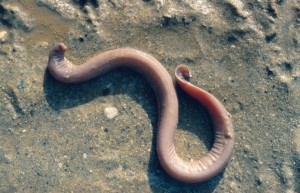How Do Hagfish Survive
Learn why this marine invertebrate squirts slime on any predators who get too close.
The hagfish might seem like an innocent-looking eel, but this 300-million-year-old, soft-skinned fish has survived the test of time due to a deadly – not to mention utterly revolting -self-defence mechanism. The hagfish has no scales, jaw, venom or spinal column, but it has the power to suffocate its enemies in a flash with the help of a choking slime squirted from vesicles down the length of its body.
In fact, the hagfish can ‘slime’ a predator in under half a second.
When the fish is physically disturbed – by a strike from an attacker, for example – the slime gland is triggered to shoot out mucus proteins called mucins, which when combined with seawater immediately turn into a thick goo. (Atlantic Hagfish)
![Hagfish]() Hagfish facts
Hagfish facts
Slime vesicles – This line of white holes along the sides of the fish secrete mucus proteins that turn to slime on contact with seawater.
Mouth – A hardened plate of cartilage pushes in and out of the circular mouth to help the hagfish rasp and scrape at its food.
Teeth – Two rows of backward-facing, horny teeth on either side of the mouth guide food into the throat.
Sensory tentacles – There are three pairs of tentacles near the head, the shortest of which is used for detecting food.

